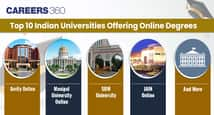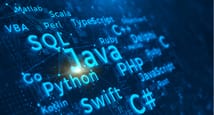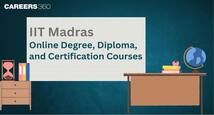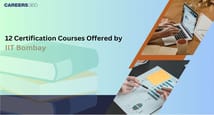- Introduction to the Course
- Bit more about the course
The Ultimate beginners course for Computer Science or IT
Quick Facts
| particular | details | |||
|---|---|---|---|---|
|
Medium of instructions
English
|
Mode of learning
Self study
|
Mode of Delivery
Video and Text Based
|
Course overview
Data and information of any kind can be created, processed, stored, retrieved, and exchanged through the use of information technology (IT). Information technology is a subset of telecommunications technology (ICT). In its broadest sense, an IT system refers to any networked collection of devices used to store, transmit, and retrieve data; in its most specific sense, it refers to a complete computer system, including all necessary components and users. Although humans have been using some form of information storage, retrieval, manipulation, and communication since the invention of writing, the term "information technology" did not appear in print until 1958 The Ultimate beginners course for Computer Science or IT certification is made available by Udemy to candidates interested in learning more about computer science and programming.
The Ultimate beginners course for Computer Science or IT online training includes 13.5 hours of video and a digital certificate upon course completion.
The Ultimate beginners course for Computer Science or IT online classes consists of parts of a computer, how a computer works, and a modern CPU architecture and assembly language programming.
The highlights
- Full Lifetime Access
- 13.5 Hours of Video
- Access on Mobile and TV
- Certificate of Completion
Program offerings
- Online course
- Learning resources
- 30-day money-back guarantee
- Unlimited access
Course and certificate fees
Fees information
certificate availability
Yes
certificate providing authority
Udemy
Who it is for
What you will learn
The Ultimate beginners course for Computer Science or IT certification course, the aspirant will learn the parts of a PC and how to put one together; how to set up the computer's BIOS; how to install Linux and Windows on a PC; how to troubleshoot problems with the hardware. The candidate will learn about the various parts of an electronic circuit designed to add two numbers and will then construct such a circuit, using data from a keyboard to calculate the sum and a seven-segment display to show the final total. The participant will learn the inner workings of a modern CPU, how to write code, and have a comprehensive understanding of the interplay between software and hardware in computer science.
The syllabus
Introduction
Parts of A Computer
- What is a Computer And CPU?
- Lecture 3 Quiz
- Memory and Motherboard
- Lecture 4 Quiz
- Power Supply Unit, BUSES and Other Devices
- Lecture 5 Quiz
- Overview of A Computer
- Lecture 6 Quiz
- Parts of A Computer
- Lecture 7 Quiz
- Assembling a PC Part 1
- Assembling a PC Part 2
- BIOS
- Lecture 10 Quiz
- What is an OS?
- Lecture 11 Quiz
- Concept of Boot and Boot Device
- Lecture 12 Quiz
- Demo Whiteboard: Downloading and Installing OS.
- Lecture 13 Quiz
- Downloading OS
- Lecture 14 Quiz
- Installing Windows OS
- Installing ubuntu OS
- Device Manager and Device Driver
- Lecture 17 Quiz
- Different Types of Computers
- Q&A Part 1
- Lecture 19 Quiz
- Q&A Part 2
How A Computer Works?
- Introduction to Section 3
- What is Computing?
- Lecture 22 Quiz
- Ten and Two Based Numerals
- Lecture 23 Quiz
- Binary Numbers
- Lecture 24 Quiz
- AND Operation
- Lecture 25 Quiz
- OR, NOT, NOR, NAND, Shift Operations and 2's compliment
- Lecture 26 Quiz
- Concept of Digital Electronics, Voltage, Current and Resistor
- Lecture 27 Quiz
- Diode
- Lecture 28 Quiz
- Transistor
- Viewing diode, transistor and resistor in Wikipedia
- Circuit with Two Resistors
- Circuit Lab Quiz
- Two Resistor Circuit in Detail
- Logic Gates NOT, OR, AND Gates
- Lecture 33 Quiz
- XOR and NAND Gates
- Lecture 34 Quiz
- Half and Full Adder
- Lecture 35 Quiz
- Single Gates Quiz
- Combination Gate Quiz
- Half Adder, Full Adder Quiz
- Seven Segment Display
- Seven segment display Quiz
- Circuit Using 7 segment display, keyboard and CPU
- Keyboard Quiz
- Circuit Using 7 segment display, keyboard and CPU Quiz
- Flipflop and Conclusion of section 3
- Lecture 38 Quiz
- Flipflop Quiz
A Modern CPU Architecture and Assembly language programming
- Introduction to Section 4
- What have we learnt so far?
- Lecture 40 Quiz
- Task Manager, Viewing files of OS etc.
- Lecture 41 Quiz
- Concept of OS Booting
- Lecture 42 Quiz
- Concept of Programming Language and Hexadecimal Numbers
- Lecture 43 Quiz
- Programming the CPU- X86 CPU Architecture
- Lecture 44 Quiz
- Introduction to Operations with demo
- Lecture 45 Quiz
- Behind the scenes of Visual Studio
- More about Instructions
- Lecture 47 Quiz
- Programs using Instructions
- Data and Code
- CPU Registers
- Lecture 50 Quiz
- Accessing Memory
- Concept of Stack
- Lecture 52 Quiz
- Demo of Stack
- Lecture 53 Quiz
- Concept of Changing EIP Register
- Concept of Function and CALL, RET, push, pop Instructions
- Concept of Stack Frame and Call Stack
- Conditions and Loops, Types of Jump Instructions
- Lecture 57 Quiz
- EFLAGS Register
- Lecture 58 Quiz
- Program: Finding the Biggest Number among n integers
- Program: Searching a Number among n integers
- Program: Sorting n integers
- Lecture 61 Quiz
- Program: Finding nth root of m
- Concept of Non-Volatile Registers
- Lecture 63 Quiz
- Assembly Single instruction practice - mov
- Assembly Single instruction practice - mov, add, sub
- Assembly Single instruction practice - push, pop, call, ret
- Assembly Single instruction practice - jmp, eflags, ret
- Assembly Multiple instruction practice - mov, add, sub, push
- Assembly Multiple instruction practice - push, pop, call, ret
- Assembly Multiple instruction practice - mov, add, sub, push, jmp
- Assembly Multiple instruction practice - jmp, pop
- Finding the biggest number program Quiz
- Searching a number program Quiz
- Sorting n integers program Quiz
- Finding nth root of m Program Quiz
- Demo Attaching MS Word to Visual Studio
- Concept of Interrupts and Floating Points
- Q&A
- Conclusion of Course
Instructors
Articles
Popular Articles
Latest Articles
Similar Courses


Field Programmable Gate Arrays Computing Systems A...
Polytechnic University of Milan, Milan via Coursera


Semantics of First Order Logic
Stanford via Edx


How Computers Work
University of London, London via Coursera


CS50s Computer Science for Lawyers
Harvard University, Cambridge via Edx


Mycs Computer Science for Beginners
Harvey Mudd College, Claremont via Edx


Interacting with the System and Managing Memory
Duke University, Durham via Coursera


Understanding Technology
Harvard University, Cambridge via Edx


Preparing for the AP Computer Science A Exam-Part ...
Cooper Union via Edx
Courses of your Interest

Professional Certificate Course in Data Science
Newton School

JavaScript Foundations
PW Skills

Technical Analysis Series
PW Skills

C Programming Foundations
PW Skills

Python Foundations
PW Skills

Getting Started with Generative AI APIs
Codio via Coursera

Generating code with ChatGPT API
Codio via Coursera

Prompt Engineering for ChatGPT
Vanderbilt via Coursera


 Brochure
Brochure Enquire
Enquire












